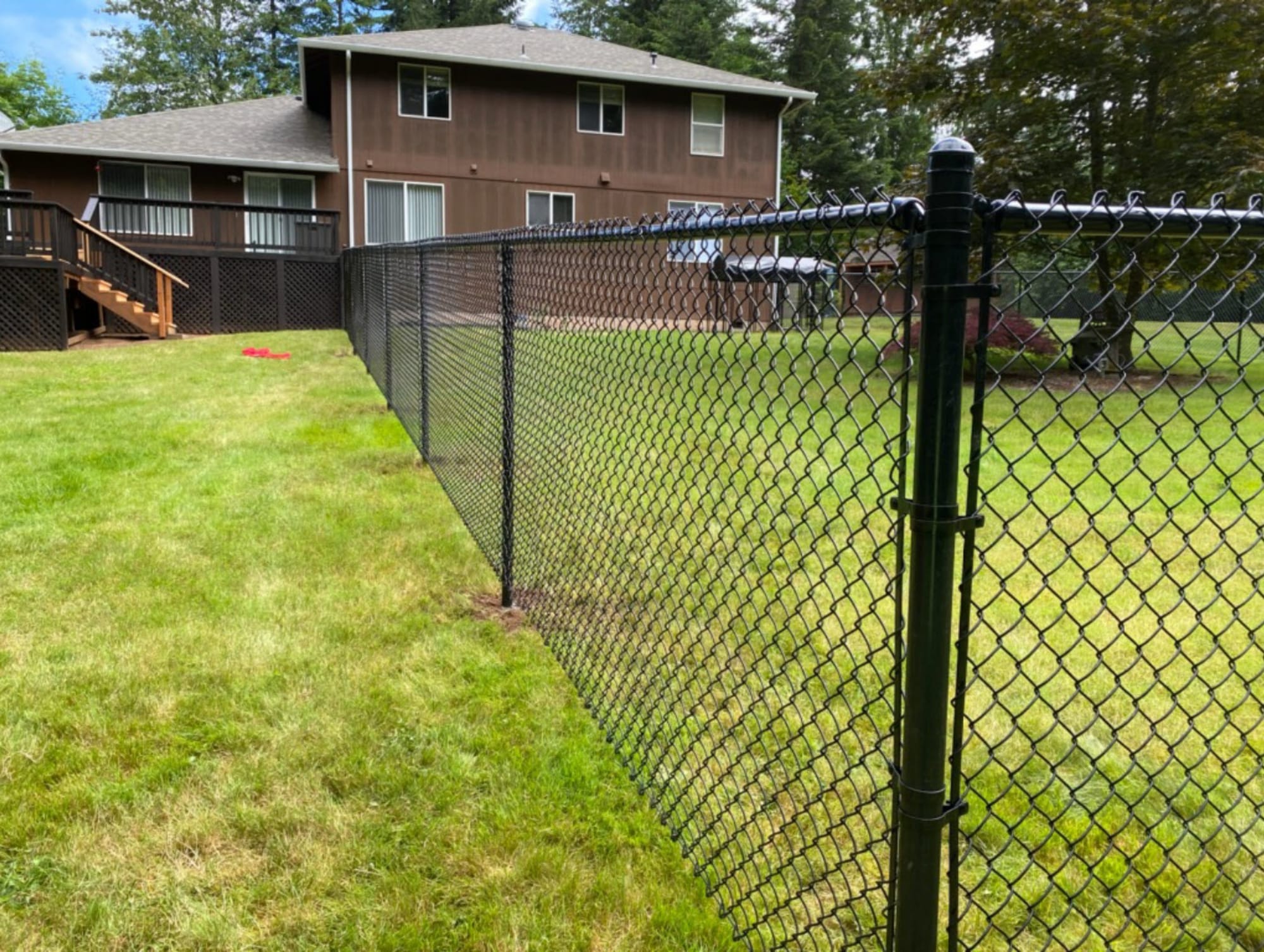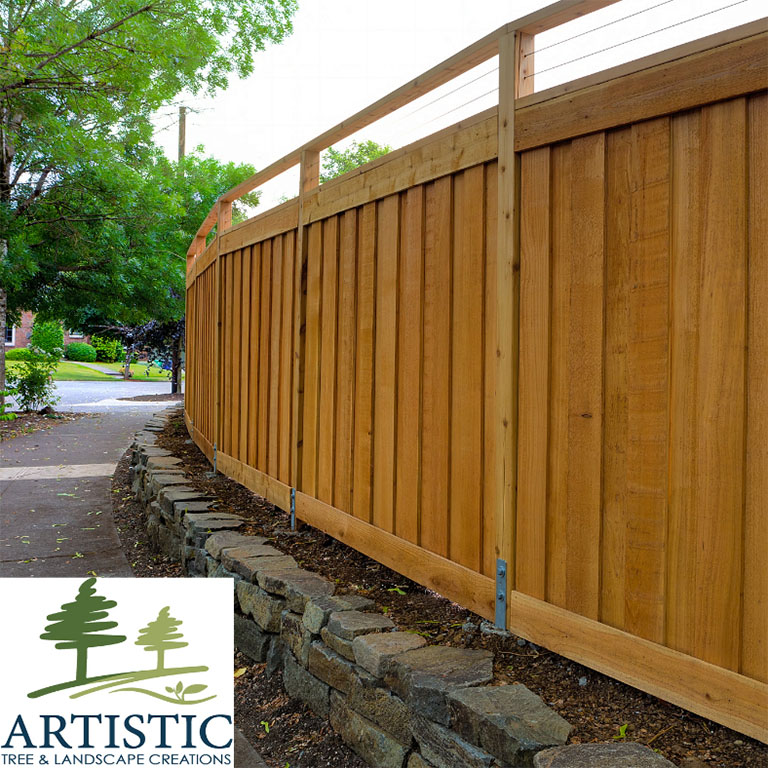All Categories
Featured
Different locations have differing laws, and understanding what's called for will certainly aid ensure that your fence is legal, safe, and built according to neighborhood criteria. Right here's a guide to help you navigate the allowing process for fence installation.
Why Are Allows Required? Permits are called for to ensure that the installation of your fence satisfies regional building ordinance and zoning regulations. These laws remain in place to maintain the safety, appearance, and functionality of properties in your neighborhood. Furthermore, permits assistance prevent disputes with neighbors regarding building lines, fencing elevation, and other structural information.
Regional authorities need licenses to keep track of things like exposure at junctions, public security, and potential damages to energies like pipes or electric lines. The process aids keep your fencing task compliant with security and legal standards.
Kinds Of Permits You Might Need. The exact permits needed can differ depending upon your location and the specifics of your task. Below are one of the most typical kinds of licenses you may require:
Structure License. Lots of cities and regions need a building license for fencings that exceed a certain height, normally over 6 feet. This authorization makes sure that your fencing follows structural standards, particularly if it's made from details products such as concrete, steel, or brick. Building authorizations are likewise needed when your fence influences the total landscape, like developing a sound obstacle or blocking a sightline.
Zoning Authorization. Zoning authorizations are released to guarantee that your fence adheres to local zoning regulations. These laws might control where fences can be put on your building (e.g., backyard, front, or side), just how high they can be, and whether they can be mounted near roads or sidewalks. Zoning legislations are implemented to maintain the total looks of neighborhoods and maintain website traffic safety and security.
Problem License. Some areas have trouble policies that establish just how much a fencing needs to be from the property line, roadway, or certain public rooms. Setback licenses are developed to ensure that your fence doesn't disrupt surrounding properties or public locations. A residential property survey might be needed to verify building lines before acquiring this kind of license.
HOA Authorization. You might need to obtain approval from the HOA prior to setting up a fence if you live in a neighborhood regulated by a Homeowners Organization (HOA) HOAs often have rigorous guidelines about the type of fence enabled in the community, including its shade, product, and elevation. Constantly contact the HOA before starting your job to avoid any disputes.
Exactly How to Obtain a Fence Permit. The procedure for obtaining an authorization commonly includes a number of steps:
Research Local Laws. Start by examining your city or region's site to discover the details demands for fencing installation. You might require to go to the local planning or structure division face to face for even more thorough information.
Prepare Your Application. The majority of cities will certainly call for an application kind, that includes details concerning your prepared fence, such as:
![]()
The kind of fencing material (wood, vinyl, chain-link, and so on) The intended height of the fence. The area and measurements of the fencing. A home study (to confirm property lines) Submit the Application. After completing the application, send it to the neighborhood structure or zoning workplace. You might be called for to pay a charge depending on your area and the dimension of your fence. Charges can differ, but they normally cover the expense of processing your demand and examining your strategies.
Await Approval. Once your application is submitted, the neighborhood authorities will certainly examine your plans to guarantee they fulfill zoning and building needs. This process can take anywhere from a couple of days to a number of weeks, depending upon the complexity of the job and the volume of authorization demands in your area.
![]()
If Needed),Examination (. Sometimes, you may need to arrange an evaluation after the fence is set up to guarantee it fulfills the required requirements. Your local workplace will certainly allow you understand if this step is essential.
When You Don't Required a License. Not every fencing setup requires a license. Some scenarios where you could not need an authorization include:
Installing a fence that's under a particular elevation (usually 3-4 feet for front yards) Changing an existing fence with one that is the very same elevation and product. Mounting a momentary fencing (e.g., for building and construction or horticulture) Nevertheless, also if your task seems tiny, it's constantly recommended to get in touch with regional authorities to make certain you're following the right procedure.
Consequences of Not Getting a Permit. Mounting a fencing without the required license can cause substantial repercussions, including penalties, elimination of the fencing, and expensive reinstallation. In many cases, neighborhood authorities might need you to change the fence if it does not meet code requirements. Furthermore, not obtaining a license can produce disagreements with next-door neighbors, especially if the fencing is placed inaccurately or violates regional height regulations.
Final thought. Prior to setting up a fencing, it is essential to investigate the certain permitting demands in your location. Contact your regional building or zoning division to learn if a license is required and to make certain that you're following the appropriate procedure. By protecting the correct authorizations, you'll make sure and prevent legal concerns that your fencing setup is secure, certified, and problem-free.
Why Are Allows Required? Permits are called for to ensure that the installation of your fence satisfies regional building ordinance and zoning regulations. These laws remain in place to maintain the safety, appearance, and functionality of properties in your neighborhood. Furthermore, permits assistance prevent disputes with neighbors regarding building lines, fencing elevation, and other structural information.
Regional authorities need licenses to keep track of things like exposure at junctions, public security, and potential damages to energies like pipes or electric lines. The process aids keep your fencing task compliant with security and legal standards.
Kinds Of Permits You Might Need. The exact permits needed can differ depending upon your location and the specifics of your task. Below are one of the most typical kinds of licenses you may require:
Structure License. Lots of cities and regions need a building license for fencings that exceed a certain height, normally over 6 feet. This authorization makes sure that your fencing follows structural standards, particularly if it's made from details products such as concrete, steel, or brick. Building authorizations are likewise needed when your fence influences the total landscape, like developing a sound obstacle or blocking a sightline.
Zoning Authorization. Zoning authorizations are released to guarantee that your fence adheres to local zoning regulations. These laws might control where fences can be put on your building (e.g., backyard, front, or side), just how high they can be, and whether they can be mounted near roads or sidewalks. Zoning legislations are implemented to maintain the total looks of neighborhoods and maintain website traffic safety and security.
Problem License. Some areas have trouble policies that establish just how much a fencing needs to be from the property line, roadway, or certain public rooms. Setback licenses are developed to ensure that your fence doesn't disrupt surrounding properties or public locations. A residential property survey might be needed to verify building lines before acquiring this kind of license.
HOA Authorization. You might need to obtain approval from the HOA prior to setting up a fence if you live in a neighborhood regulated by a Homeowners Organization (HOA) HOAs often have rigorous guidelines about the type of fence enabled in the community, including its shade, product, and elevation. Constantly contact the HOA before starting your job to avoid any disputes.
Exactly How to Obtain a Fence Permit. The procedure for obtaining an authorization commonly includes a number of steps:
Research Local Laws. Start by examining your city or region's site to discover the details demands for fencing installation. You might require to go to the local planning or structure division face to face for even more thorough information.
Prepare Your Application. The majority of cities will certainly call for an application kind, that includes details concerning your prepared fence, such as:

The kind of fencing material (wood, vinyl, chain-link, and so on) The intended height of the fence. The area and measurements of the fencing. A home study (to confirm property lines) Submit the Application. After completing the application, send it to the neighborhood structure or zoning workplace. You might be called for to pay a charge depending on your area and the dimension of your fence. Charges can differ, but they normally cover the expense of processing your demand and examining your strategies.
Await Approval. Once your application is submitted, the neighborhood authorities will certainly examine your plans to guarantee they fulfill zoning and building needs. This process can take anywhere from a couple of days to a number of weeks, depending upon the complexity of the job and the volume of authorization demands in your area.

If Needed),Examination (. Sometimes, you may need to arrange an evaluation after the fence is set up to guarantee it fulfills the required requirements. Your local workplace will certainly allow you understand if this step is essential.
When You Don't Required a License. Not every fencing setup requires a license. Some scenarios where you could not need an authorization include:
Installing a fence that's under a particular elevation (usually 3-4 feet for front yards) Changing an existing fence with one that is the very same elevation and product. Mounting a momentary fencing (e.g., for building and construction or horticulture) Nevertheless, also if your task seems tiny, it's constantly recommended to get in touch with regional authorities to make certain you're following the right procedure.
Consequences of Not Getting a Permit. Mounting a fencing without the required license can cause substantial repercussions, including penalties, elimination of the fencing, and expensive reinstallation. In many cases, neighborhood authorities might need you to change the fence if it does not meet code requirements. Furthermore, not obtaining a license can produce disagreements with next-door neighbors, especially if the fencing is placed inaccurately or violates regional height regulations.
Final thought. Prior to setting up a fencing, it is essential to investigate the certain permitting demands in your location. Contact your regional building or zoning division to learn if a license is required and to make certain that you're following the appropriate procedure. By protecting the correct authorizations, you'll make sure and prevent legal concerns that your fencing setup is secure, certified, and problem-free.
Latest Posts
Boost Your Home with Overhead Door Equipment
Published May 24, 25
1 min read
Join Your Financial Partner at WyHy – Top Benefits for Your Future
Published May 23, 25
1 min read
Discover Your Financial Partner at WyHy – Top Benefits for Wyoming Residents
Published May 23, 25
1 min read